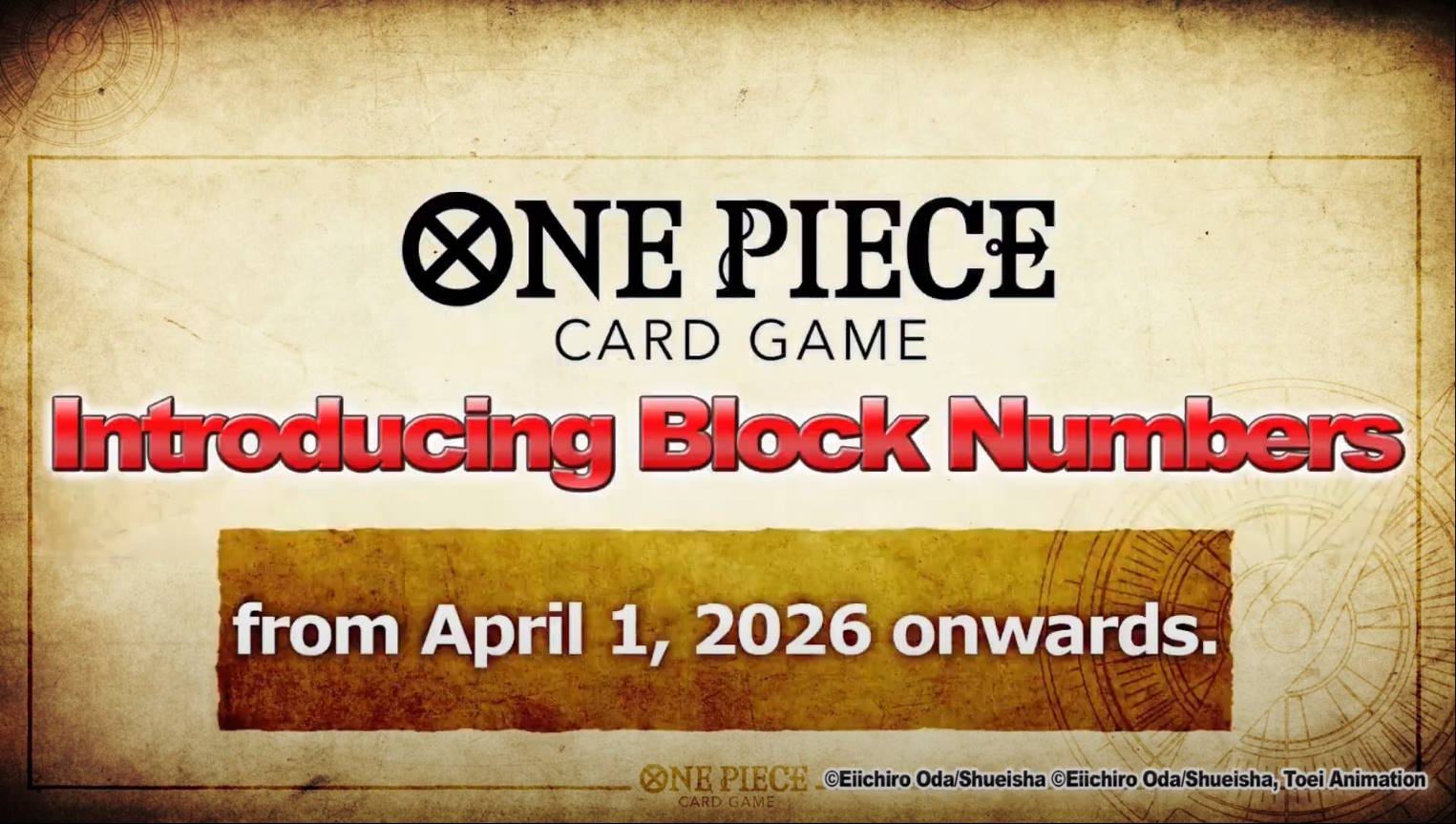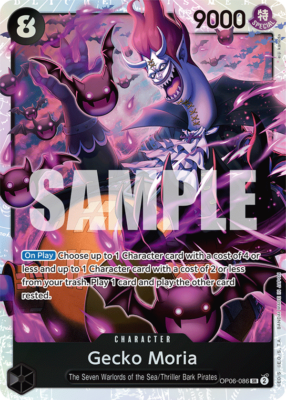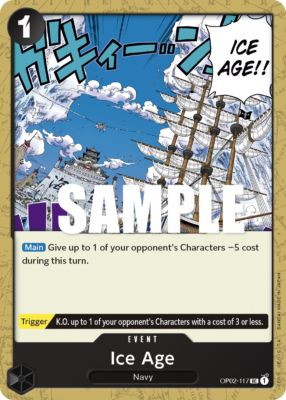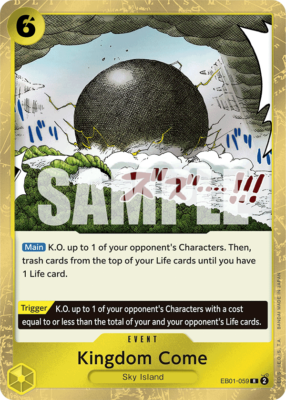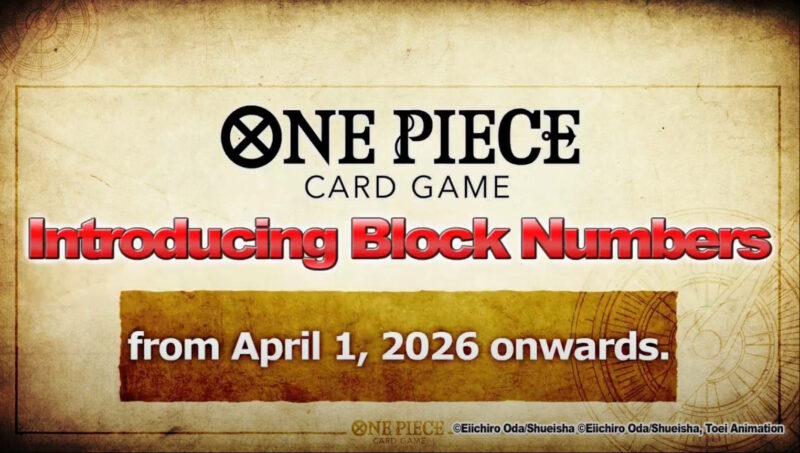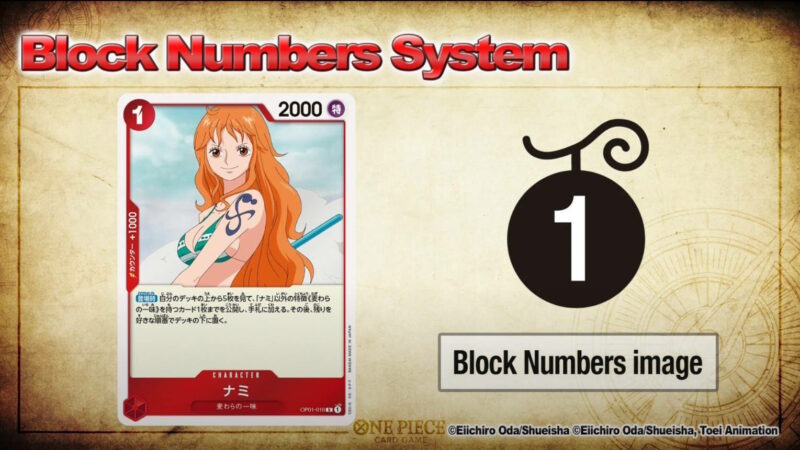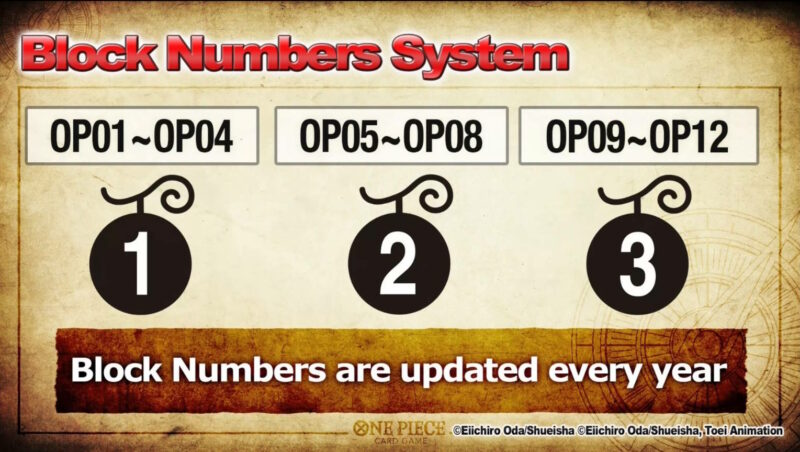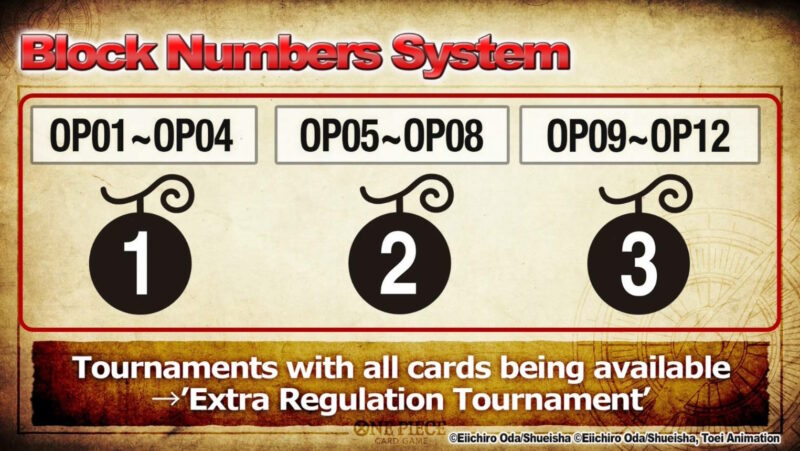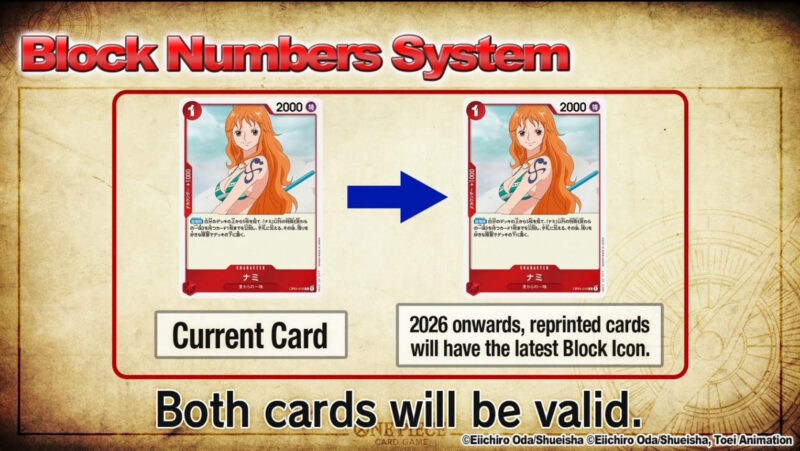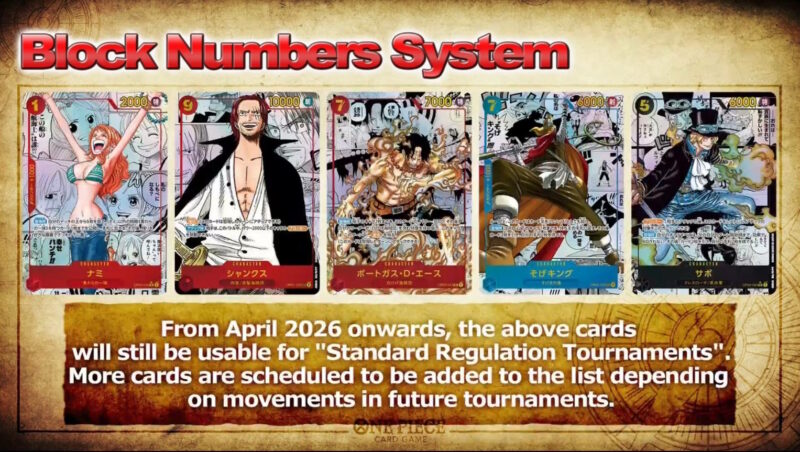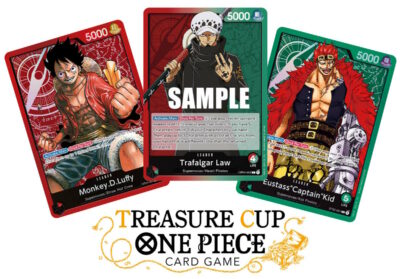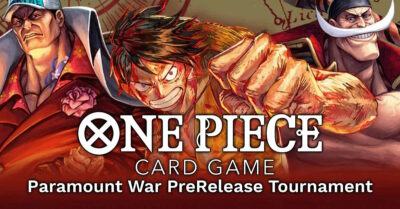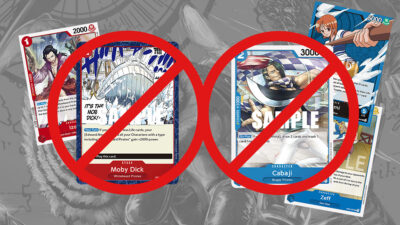The Bandai Card Games Fest 24-25 World Tour Final in Tokyo, Japan marked the end of a huge tour. It also pointed the way forward for the next season with announcements of four new banned cards.
Shortly after, information came out to confirm that a rotation system is going to be put into place. This means older sets of cards will be restricted from play, and only cards with a specific block icon will be allowed.
We’ll explain in full further down. First, let’s talk about the bans.
Banned Cards – April 1st, 2025
The following four cards will be banned from all official tournaments as of April 1st. This is in addition to cards banned/restricted previously. Any card with a matching card ID cannot be played at all in any decks.
The ban includes the alternate art or reprinted versions. That means the reprinted versions of Gecko Moria from PRB-01, and the different versions of Ice Age which were in ST-19 and PRB-01 are all banned the same.
Ban Reaction
These bans will have a big impact of the competitive scene, especially to Black/Yellow Luffy decks. The ban of OP06-086 Gecko Moria seems to be well received. It’s hard to find a Black deck without it as it offers so much value.
While the ban seemed overdue, many had been saying the card should have instead been locked to either a Leader or a faction. With the total ban, other decks that weren’t so overpowered in the meta will now have a hard time staying relevant.
OP07-045 Jinbe was a key part of decks using the OP01-060 Donquixote Doflamingo leader. With his ability you could (potentially) chain one Jinbe into another for some incredible early game value.
Taking OP02-117 Ice Age out of the game is a second hit to Luffy players, but has a bigger impact on OP02-093 Smoker decks. They rely heavily on cost reduction effects, and Ice Age was a cheap and effective debuff that’s now off limits.
EB01-059 Kingdom Come is the most unexpected, especially being a newer card. OP05-098 Enel is taking a hit here, though this card wasn’t a must-have four-of in may yellow decks like other cards.
Overall, the bans should create more space in the meta for different decks. Having just one or two top decks means players have to focus on those, instead of trying different cards or strategies to react to lots of potential opponents.
Having a regular set of bans is actually healthier than none. However, it does seem like the timing is a little late for the English version meta. What do you think? Comments below.
New Rotation System + Block Icons Explained
Every One Piece card has a block icon with a number at the bottom right that represents the “block” the card is in. The icon is a silhouette “Gomu Gomu no Mi” devil fruit.
Every card released in the main and special sets will have a number based on the year of the game it was released. For example, sets OP01 to OP04 were all released in year one, so have the block icon with a number 1.
- Block 1: Includes sets OP01 to OP04, ST01 to ST09, and
- Block 2: Includes sets OP05 to OP08, EB01, and new cards only from ST10 to ST14
- Block 3: Includes sets OP09 to OP12, new cards only from ST15 to one of the upcoming ST decks
From April 1st 2026, only cards from block 2 and higher will be legal for official tournament play in “Standard Regulation” format. All manga rare cards from OP01 to OP05 are due to be added to the format as well.
However, there are a couple of important things to know.There are plans to reprint some older cards with updated block icons. When this happens, those cards and all versions of it will be legally playable.
For example: OP01-016 Nami has block icon 1 for all printings so far. If she were reprinted with block icon 2, all of the previously printed versions with block icon 1 would now be treated as having block icon 2, and would be legal to play while block icon 2 was legal.
On top of that, there will be official tournaments known as “Extra Regulation” that will allow all blocks. Locals will likely stick to having just the newer format, but may also have Extra format events.
Why Rotation Blocks?
Rotating out what sets of cards are playable instead of just banning certain cards is a common practice in card games. The downsides are that you need to buy new cards to play competitively, and your older collection may drop in value.
However, rotation helps the game and players in a variety of ways:
- More reason to buy new cards. The game is a business that relies on making money. If players don’t need to buy new cards, Bandai don’t make money. Less money means a smaller team, less events, less design and testing, and eventually no game. See: Almost every other Bandai card game.
- Keeps the game interesting. Having an ever-changing meta means you have to keep up with new cards and new strategies, and try new things out. If you always know the best response will be a certain classic card, you don’t have as much to plan for.
- Deck building is prioritized over important cards. Players that like to test out new theories and less-obvious strategies are rewarded. When you are forced to look for other options, you find things you wouldn’t have if you weren’t forced to look. New cards that are underrated suddenly become more viable when staples drop from the rotation.
- Helps keep design fresh. If new cards always have to take into account older card effects, designers become limited. In a similar way, designers can bring back good older ideas with tweaks to make them work better, or not be as overpowered.
- Easier for new players. New players is always good for the game, and new sets now become more enticing as they aren’t penalized for not being around long enough. If you like to memorize obscure 20-year old cards for specific situations, try Commander. If you want to play with the cool new cards from the pack you just opened, welcome to One Piece.
- Helps newer players from being priced out or unable to find rare cards. If an older card suddenly becomes a must-have for certain decks, older players might just have a few lying around. Newer players are at the mercy of the “market price”, which can lead to (even more) price-gouging.
- Newer cards don’t have always have to be more powerful to see play. The alternative is “power creep”, where new cards are always better, so old cards are always worse. This makes other formats with older cards less fun.
- Strategic reprints are fun. Bringing back a handful of older cards into legal play can be a fun reminder of an older meta. Reprints with a new block number also mean you’ll get to dig through your binders and show off a cool older printing. That, or complain about the anime copy/paste art you suffered through and how the kids have it easy days. I tell ya, we used to have to update the sim manually each time….

